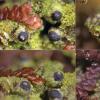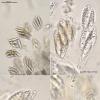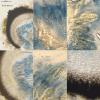
30-11-2025 12:53
 Edvin Johannesen
Edvin Johannesen
White short-stipitate apothecia found on thin twig

30-11-2025 10:47
 William Slosse
William Slosse
I recently found a collection of small Peziza sp.

27-11-2025 12:01
Thomas Læssøehttps://svampe.databasen.org/observations/10496727

27-11-2025 11:46
Thomas Læssøehttps://svampe.databasen.org/observations/10493918

17-09-2025 10:50
Heather MerryleesHi there!I am hoping for any advice on the identif

29-11-2025 08:40
 Andreas Millinger
Andreas Millinger
Hello,on a splintered part of a branch on the grou

28-11-2025 16:45
Nogueira HéctorNovember 23, 2025 Requejo de Sanabria (León) SPAI

25-11-2025 14:24
Thomas Læssøehttps://svampe.databasen.org/observations/10490522

27-11-2025 15:41
Thomas LæssøeSpores brownish, typically 4-celled; 26.8 x 2.4;

27-11-2025 11:31
Thomas LæssøeCollectors notes: Immersed ascomata, erumpent thro
Ascolichen or lichenicolous fungus?
Enrique Rubio,
07-02-2025 20:25
Ascomata pheritecioid, KOH-negative, flask-shaped, black, melanized, ostiolate and up to 0.5 mm high, semi-inmersed o a thick layer of green algae over old thalli of a Frullania species on hardwood. The hymenium is hemiamyloid, reddish in IKI, deep blue after KOH-pret. Periphyses numerous, pseudoparaphyses or paraphyses not seen. I think the asci are not bitunicate, but I can't say for sure. The ascospores are hyaline, very pale yellowish brown at maturity, (3-)6-7 transversaly septate and smooth.
I really can't tell whether it is an ascolichen or a lichenicolous ascomycete. Would any of you have any ideas that could help me?
Paul Diederich,
07-02-2025 21:09

Re : Ascolichen or lichenicolous fungus?
This is a lichen, not a lichenicolous fungus. It strongly resembles species of Agonimia, but in that genus, ascospores are always (sub-)muriform.
Zdenek Palice,
07-02-2025 23:51
Re : Ascolichen or lichenicolous fungus?
Hallo, I agree that it is a lichen. In my opinion it could be a richly fertile specimen of Normandina chlorococca (Leighton) Orange, recently segregated from N. acroglypta by the late Alan Orange in Lichenologist 54 (2022). Both N. acroglypta and N. chlorococca are often associated with Frullania liverworts, and both species may even grow together on 'mossy' ultramafic (serpentinic) rocks. The epiphytic/epixylic stuff usually refers to N. chlorococca, which is normally sorediate sterile crust and only rarely fertile. The two species are reliably separated by chemistry, different terpenoids.
Enrique Rubio,
08-02-2025 00:32
Re : Ascolichen or lichenicolous fungus?
Thank you Paul and Zdenek.
It matches perfectly with Normandina chlorococca!
It matches perfectly with Normandina chlorococca!
Alain GARDIENNET,
08-02-2025 08:40
Re : Ascolichen or lichenicolous fungus?
Hi friends,
Zdenek, I would be interested by Orange's paper because I met N. acroglypta in my fields.
Best wishes,
Alain (agardiennet@gmail.com)
Zdenek, I would be interested by Orange's paper because I met N. acroglypta in my fields.
Best wishes,
Alain (agardiennet@gmail.com)





